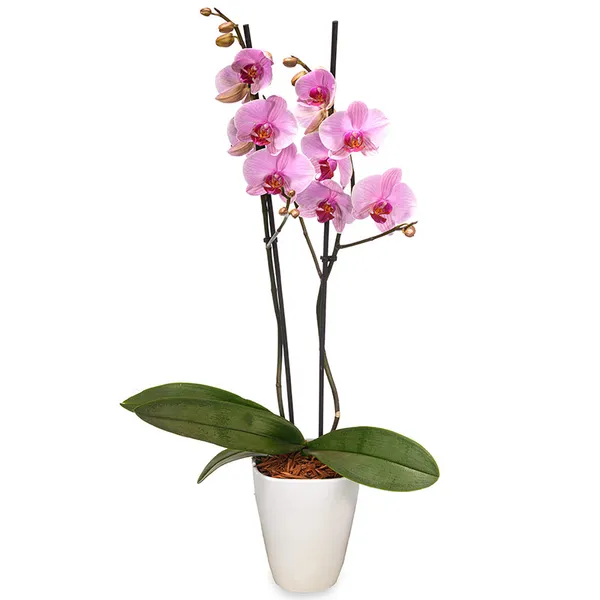Orchids: The Elegant Icons of Beauty and Rarity
Orchids are one of the largest and most diverse families in the plant kingdom, with over 25,000 species and 100,000 hybrids. Renowned for their exotic beauty, architectural blooms, and long-lasting flowers, orchids are revered symbols of refinement, love, and rare beauty. Native to nearly every continent, orchids range from the bold and fragrant to the delicate and miniature. Their asymmetrical flowers, intricate patterns, and sculptural forms make them a favourite for both interior design and emotional gifting.
COMMON NAME
Orchid
BOTANICAL NAME
Orchidaceae family (e.g. Phalaenopsis, Cattleya, Dendrobium, etc.)
ORIGIN
Global (notably Asia, South America, Central America)
PEOPLE ALSO CALL IT
Moth Orchid, Ice Orchid, Cymbidium, Butterfly Orchid
FLOWERING TIME
Varies by species (most bloom winter to spring)
ASPECT
Bright, indirect light, high humidity, good air circulation
SYMBOLISM
Love, luxury, elegance, beauty, mystery, fertility
Care Tips for Orchids in the Pot (esp. Phalaenopsis)
Light: Orchids need bright, indirect light—avoid harsh midday sun.
Watering: Water every 7–10 days, allowing the potting medium to dry out slightly between waterings. Never let the roots sit in water.
Humidity: Prefers 50–70% humidity. Use trays with water and pebbles or a humidifier indoors.
Air circulation: Orchids dislike stagnant air—gentle movement helps prevent rot and mould.
Potting mix: Use a special orchid bark mix, not regular soil. Repot every 1–2 years.
Fertilisation: Use a low-concentration orchid fertiliser ("weekly weakly") during active growth.
Pruning: After blooming, cut the flower spike just above the node for potential reblooming.
Symbolism & Meaning
Orchids represent refined beauty, elegance, and deep emotional connections. In Victorian times, they symbolised luxury and sophistication, while in Chinese culture, they stand for fertility and harmony. Due to their uniqueness and diversity, orchids also convey rarity, mystery, and exotic charm—making them ideal for expressing admiration, love, and reverence.
Types of Orchids
Phalaenopsis (Moth Orchid) – Easiest to care for; popular as houseplants; blooms for months.
Cymbidium – Hardy, with many flowers per stem; ideal for cutting.
Dendrobium – Upright, delicate blooms; great for beginners.
Cattleya – Fragrant, bold flowers, traditionally used in corsages.
Vanda – Large, colourful, often suspended in air with exposed roots.
Oncidium (Dancing Lady Orchid) – Numerous tiny blooms; whimsical and long-lasting.
Frequently Asked Questions About Orchids
Orchids prefer a bright spot without direct midday sun, high humidity, and well-ventilated roots. Use a transparent pot with orchid bark and mist occasionally. Feed with a special orchid fertiliser every 2–4 weeks during the growing season.
Repot orchids every 2–3 years, ideally after flowering in spring. Remove old bark, trim dead roots, and place the plant in fresh orchid substrate. Never use regular potting soil.
After blooming, cut the flower spike back to the second or third node (if green). If the spike has turned brown and dry, cut it off completely. Never cut healthy leaves or roots.
Water once a week in winter and up to twice a week in summer. Let the bark dry out slightly between waterings. The best method: soak the pot in water for 10–15 minutes, then let it drain well.
Most common orchids (like Phalaenopsis) are considered non-toxic to cats. Still, it’s best to prevent nibbling, as eating large amounts may cause stomach upset.
Orchids can bloom for 6–12 weeks, depending on the variety and conditions. With proper care, many types (like Phalaenopsis) can rebloom once or twice a year.
Most popular orchids are not poisonous to humans or pets. However, it’s always smart to check specific varieties, especially if you have curious animals or small children.
Most orchids bloom once or twice a year, often in winter or early spring, depending on the species. Phalaenopsis can bloom almost all year round with the right care.




